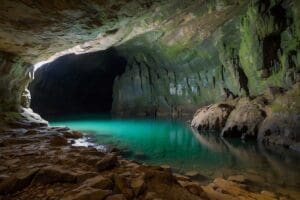The Underground Cities: A Comparative Exploration from Cappadocia to Montreal
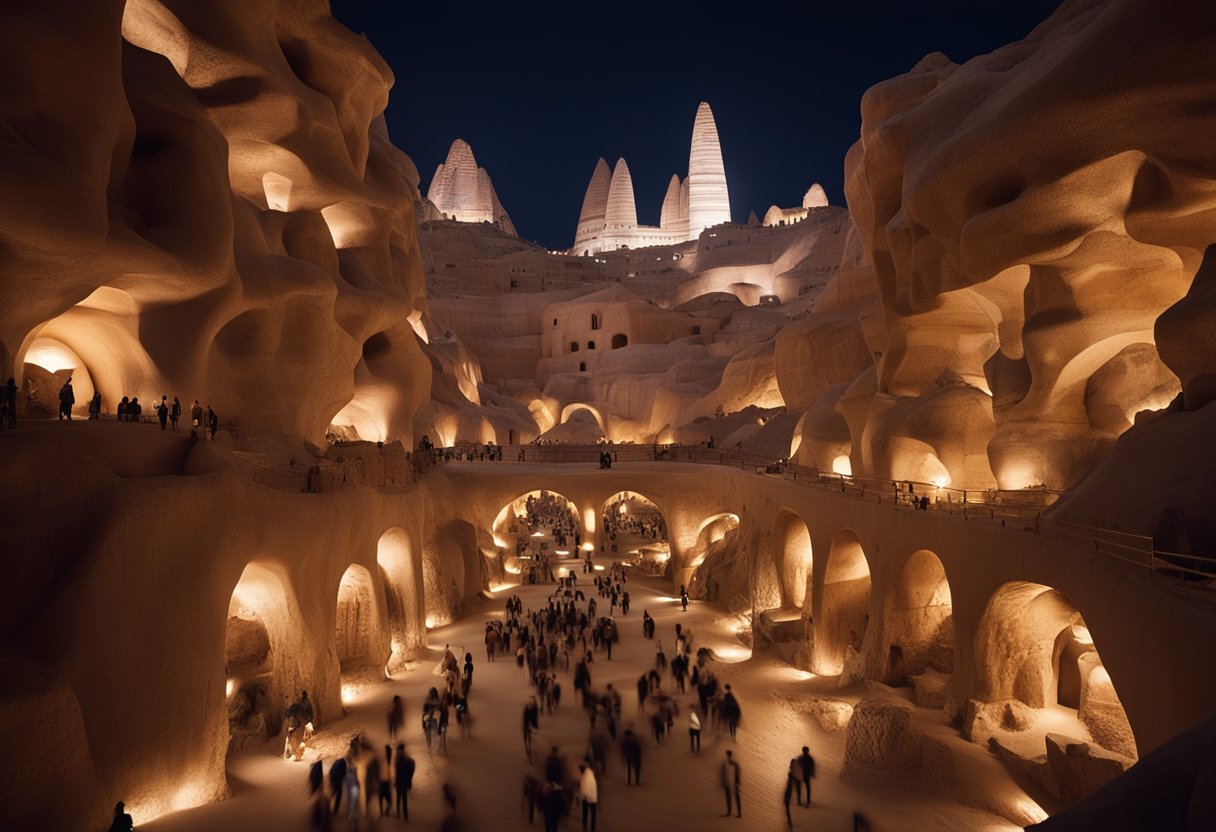
Updated On: April 23, 2024 by Aya Radwan
Venturing below the surface of bustling cities and ancient lands, we discover a world of ingenuity where life thrives beneath our feet. Underground cities, a remarkable phenomenon spanning from the historical depths of Cappadocia to the urban expanses of Montreal, showcase the versatility and resilience of human civilisation. In Cappadocia, these subterranean havens carved from soft volcanic rock have stood as silent witnesses to thousands of years of history, providing shelter and sanctuary from various threats.
Meanwhile, Montreal’s RÉSO represents modernity’s answer to the harsh winters of Canada, a multi-level network that connects the city’s key locations, offering warmth and convenience. Both urban labyrinths, whether ancient or contemporary, speak volumes about our architectural creativity and the diverse ways we adapt our environments to suit our needs. As we explore these underground metropolises, we uncover not only the secrets of the past but also the potential of our future urban landscapes.
The Phenomenon of Underground Cities
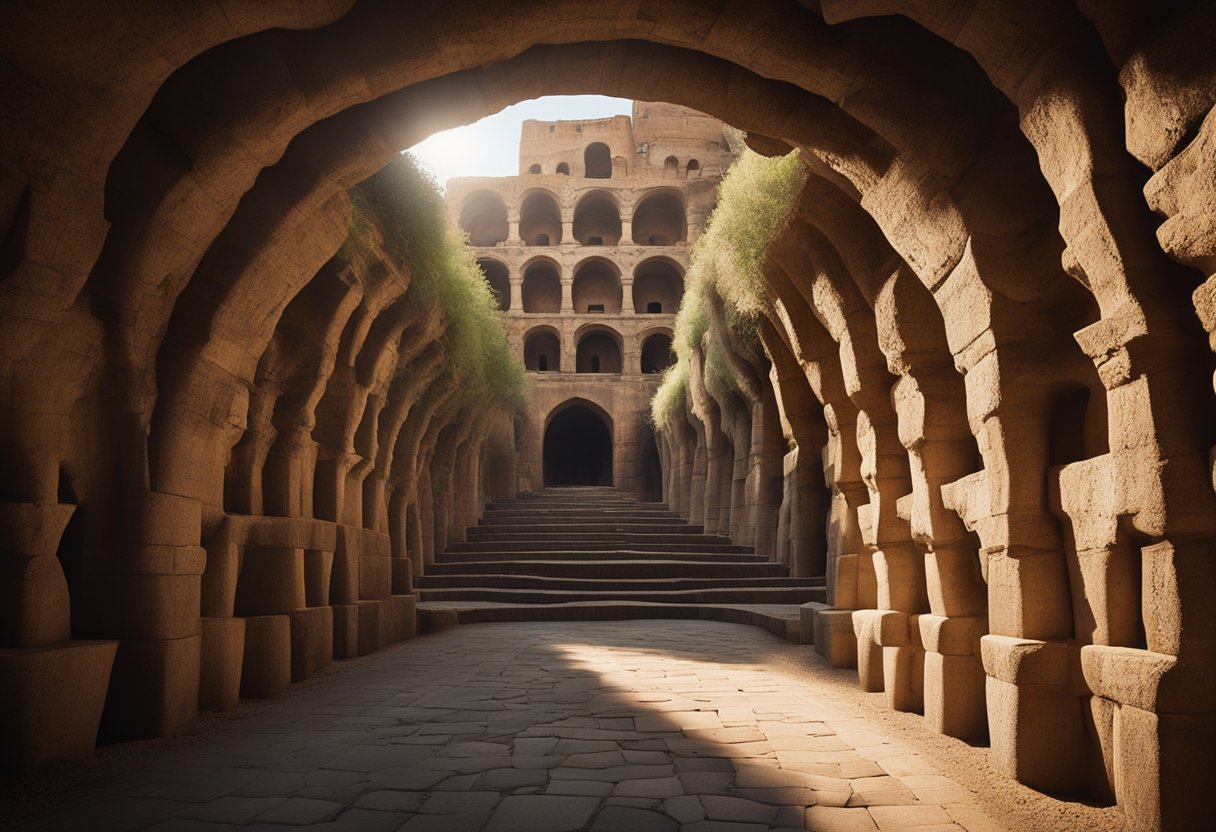
Underground cities capture our imagination, not just as relics of the past but also as living examples of human adaptability. Throughout history, these subterranean networks have provided shelter, security, and community.
Cappadocia’s Underground Marvels
In central Turkey, the subterranean cities, like Derinkuyu, showcase an intricate, ancient network. Originally carved by the Phrygians, these labyrinths could shelter thousands, providing everything from wine cellars to chapels.
Montreal’s Modern Maze
By contrast, Montreal, Canada, boasts a modern underground city, a bustling commercial and residential space. Its climate-controlled passages connect shopping centres, offices, and transport hubs.
| Historical Underground Cities | Purpose | Example Locations |
|---|---|---|
| Ancient | Refuge, life | Cappadocia, Turkey |
| Medieval | Shelter | Derinkuyu, Turkey |
| Modern | Commerce | Montreal, Canada |
The Appeal
What draws us to these spaces? Is it their ingenuity, a testament to human resilience? Observed globally, these environments reflect distinct needs and eras, from protection in times of conflict to urban convenience in contemporary life.
The Connectivity
Underground cities demonstrate a silent yet powerful integration, where life persists unseen. Our fascination lies not only in their construction but also in their ongoing evolution and place in the urban landscape.
In recounting the stories of these underground expanses, we’re reminded of our shared heritage—both ancient and unfolding. Our journey through these realms allows us to witness the remarkable ways in which civilisations have, and continue to, carve their existence below the world above.
Cappadocia’s Hidden Depths: History and Exploration
Cappadocia, a region in central Turkey, is renowned for its extraordinary underground cities like Derinkuyu, Kaymakli, and Özkonak, carved from the soft volcanic rock thousands of years ago. These cities were once havens of safety and mystery, and today, they beckon travellers to uncover the secrets of the past.
Derinkuyu: A Subterranean Marvel
Derinkuyu is an underground city that plunges over 85 metres into the Earth and is comprised of 18 levels, making it a remarkable architectural feat. Historically, it served as a refuge from invaders during tumultuous times. This expansive city includes living quarters, stables, and a network of tunnels connecting it to other subterranean cities. Derinkuyu is not only a testament to the ingenuity of early civilizations like the Phrygians and Hittites but also to the strategic importance of underground spaces in the Byzantine era.
Kaymakli: Labyrinth of Tunnels
Kaymakli is yet another impressive labyrinthine city, believed to have been built in the 7th century BCE and expanded by the Byzantines. The inhabitants of Kaymakli carved out living spaces, storage rooms, and even places of worship like chapels. The city winds deep into the rock with narrow passages connecting different areas, a vivid illustration of the clever engineering used to protect and sustain large populations in secrecy. The layout of the tunnels and the presence of ventilation shafts reveal a sophisticated understanding of subterranean architecture.
Özkonak: Fortified Refuge
Less well-known but equally fascinating is Özkonak, another subterranean settlement. Created using a similar rock-cutting technique, Özkonak was fortified with stone doors and had an advanced communication system. Even each of the city’s ten floors could be sealed off individually. It housed amenities like cellars and stables, demonstrating how these ancient communities adapted to a life underground. As a strategic defensive refuge, Özkonak highlights the constant need for security in the region’s past.
Our exploration of Cappadocia and its subterranean marvels showcases a unique historical narrative. The underground cities such as Derinkuyu, Kaymakli, and Özkonak provide invaluable insights into the lives of ancient civilizations, their ingenuity, and their determination to protect what was theirs. Now a fascinating stop for travellers, they serve as a direct link to this intriguing chapter in human history.
Montreal’s RÉSO: Urban Comforts Below the Surface
Montreal’s RÉSO, an extensive underground network, provides warmth and myriad activities during the frosty winter months. This subterranean city boasts a range of amenities, from shops and eateries to hotels and cinemas, ensuring a comfortable urban experience shielded from the cold.
Warming Up in Winter: RÉSO’s Lifestyle
Engulfed by the brisk Canadian winter, Montrealers and tourists can find solace in the RÉSO’s temperate environment. This interconnected maze not only offers respite from the harsh elements but also a chance to stay active and social. At the core of RÉSO’s design, efficient ventilation systems maintain a pleasant climate, allowing everyone to navigate the complex comfortably.
Retail and Recreation: Shopping and Dining Underground
Shopping Malls: The RÉSO is home to renowned shopping centres like Complexe Desjardins and Cours Mont-Royal. Subterranean paths link multiple retail destinations, making shopping an adventure in itself without having to step outside.
- Cinemas: For film enthusiasts, the underground city houses cinemas where the latest blockbusters can be enjoyed.
- Restaurants: A variety of restaurants are scattered throughout, offering a range of cuisines to satisfy diverse palates.
- Entertainment Venues: Venues for live performances add a layer of cultural entertainment to the underground experience.
- Hotels: Visitors wishing to extend their stay have access to numerous hotels connected to the maze, creating a seamless experience from slumber to urban exploration.
- Metro Stations: The RÉSO is easily accessible through various metro stations, enhancing its convenience for residents and tourists alike.
Global Perspectives on Subterranean Living
Subterranean living extends far beyond a single country or culture, with numerous cities around the world showcasing impressive underground networks, rich in history and still functioning today.
Dixia Cheng: China’s Underground
In China, Dixia Cheng, also known as Beijing’s “Underground City,” is a vast network beneath the capital’s streets. This subterranean city initially served as a bomb shelter and includes a range of facilities, such as a hospital, living areas, and schools.
Setenil De Las Bodegas: Spain’s Cliffside Dwellings
Setenil de las Bodegas in Spain intricately combines architecture and nature, with homes and businesses built directly into the cliffs. This town is not only a residential area but also boasts a series of wineries, leveraging the natural coolness of rock for wine storage.
Coober Pedy: Australia’s Opal Town
Australia’s Coober Pedy is a town like no other. Situated in South Australia, the majority of its residents live underground to escape the scorching heat. Accommodation options for visitors include unique subterranean hotels, and the town is renowned for being the opal capital of the world.
Wieliczka Salt Mine: Poland’s Subterranean Heritage
The Wieliczka Salt Mine in Poland is a breathtaking example of historical subterranean architecture. Carved from salt, this mine features intricate chapels and artworks, and offers guided tours showcasing miners’ life and the salt mine’s heritage.
Cappadocia’s Daily Life: Past and Present
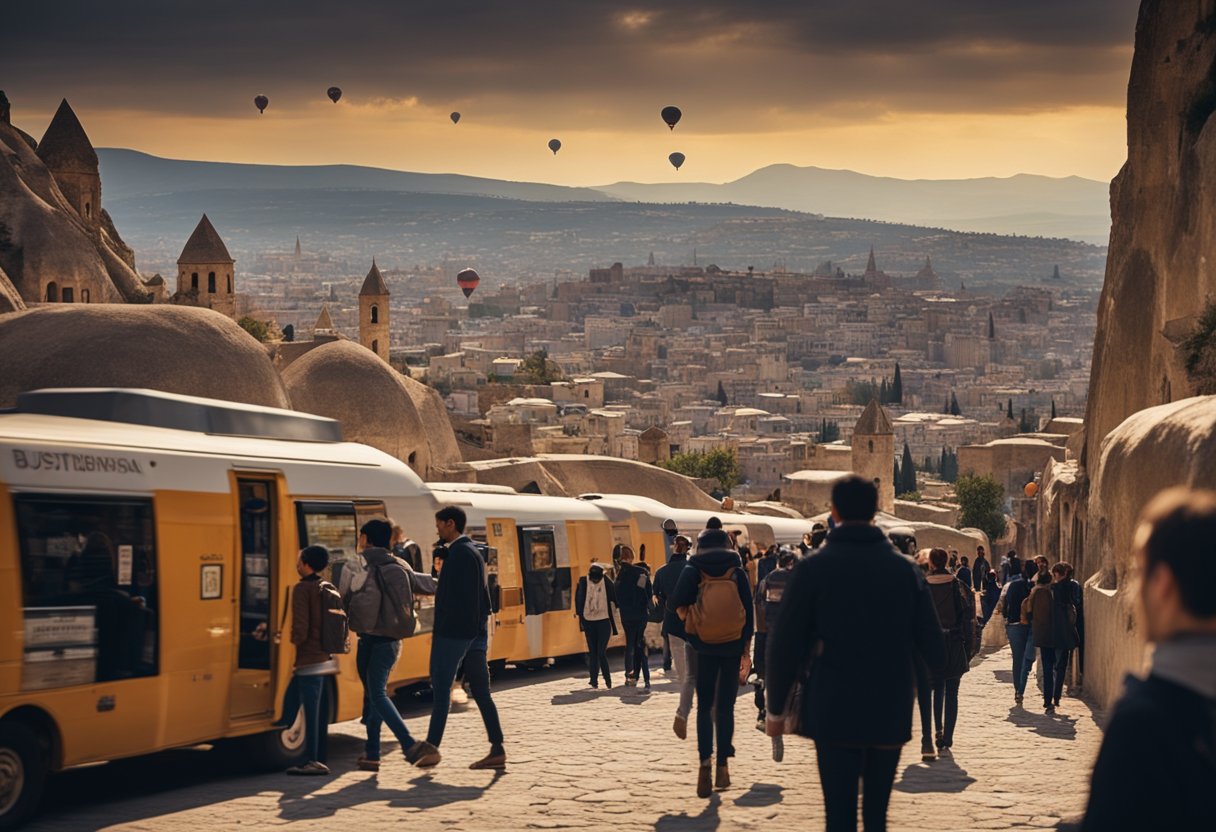
Cappadocia, a region famed for its ethereal fairy chimneys and subterranean cities, is a testament to human ingenuity and resilience. The UNESCO World Heritage site is not just a marvel of nature, but also home to a fascinating history, reflected in the way its inhabitants have lived through the centuries.
In the past, the communities of Cappadocia carved entire cities out of the soft tufa rock, creating hidden refectories, churches, and homes. These underground cities served as sanctuaries from Roman and Arab invasions. They sustained life with intricate air shafts, livestock pens, and wine and oil presses, ensuring that the basic necessities like food and water were accessible.
Intricate frescoes in the churches illustrate the region’s strong religious and missionary school heritage. We find these same spaces reveal much about the daily lives of the people, as well as their incredible ability to adapt to a subterranean lifestyle, while above ground, the richness of Byzantine art continued to flourish in rock-hewn sanctuaries.
Today, our daily life in Cappadocia may not require us to take refuge underground, but we still maintain a connection to our past. Traditional architecture thrives amongst the cave hotels and homes, effortlessly blending modern conveniences with historical context. Travel here is not just about exploring the physical landscape; it’s an immersion into a living history where both culture and tradition coalesce.
The region’s culinary offerings, although evolved, still hold the essence of past flavours. Dishes prepared with local produce, reflecting a long-standing relationship with the land. While not all of us may engage directly in farming or tending livestock, these practices still form the backbone of our communal sustenance.
Our commitment to preserving our heritage while navigating modernity is clear. May the traces of those who came before us always serve as guidance for the paths we carve out today and in the future.
Architectural Ingenuity and Innovation
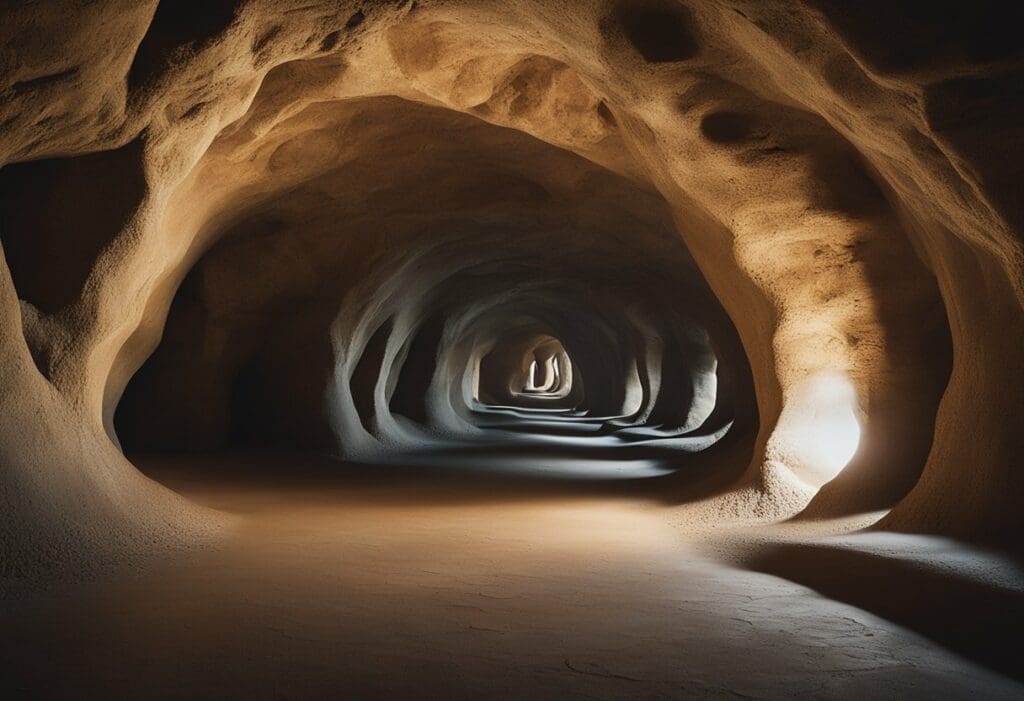
When we explore the underground cities of Cappadocia, we witness the remarkable capacity for human innovation. These subterranean havens exemplify the exquisite blend of ancient engineering and architectural mastery. Carved into soft volcanic rock, these cities, including the iconic Derinkuyu and Kaymaklı, boast elaborate tunnel systems stretching deep below the surface.
Ventilation was a critical challenge ingeniously solved; cities like Derinkuyu featured complex ventilation systems ensuring a continuous flow of fresh air despite being up to 85 meters deep. These feats of creativity, designed for both protection and daily life, could shelter thousands during times of siege or natural disaster.
In contrast, Montreal’s Underground City, or RÉSO, reflects a different type of architectural ingenuity tailored to modern needs. It is an extensive network beneath the bustling metropolis that facilitates traffic flow and daily commutes, keeping residents sheltered from harsh weather. Integrating commercial and residential spaces, this interconnected city boasts impressive diversity in its use, harmonising urban life with practicality.
Cappadocia:
- Architecture: Carved into volcanic rock, multi-level
- Engineering: Complex tunnels, chambers, and communal spaces
- Creativity: Adaptive use for living, storage, and defence
- Protection: Secure from invaders, natural calamities
Montreal:
- Architecture: Integrated with above-ground structures
- Engineering: Supports modern urban infrastructure
- Creativity: Maximises usable space, enriching urban experience
- Diversity: Houses shops, hotels, and transit systems
Our focus on these marvels of construction is not just about celebrating human accomplishment; it is about respecting the need for sustainable and practical innovations that advance our societies while preserving the intricate tapestry of our cultures and histories.
Tourism in Earth’s Depths
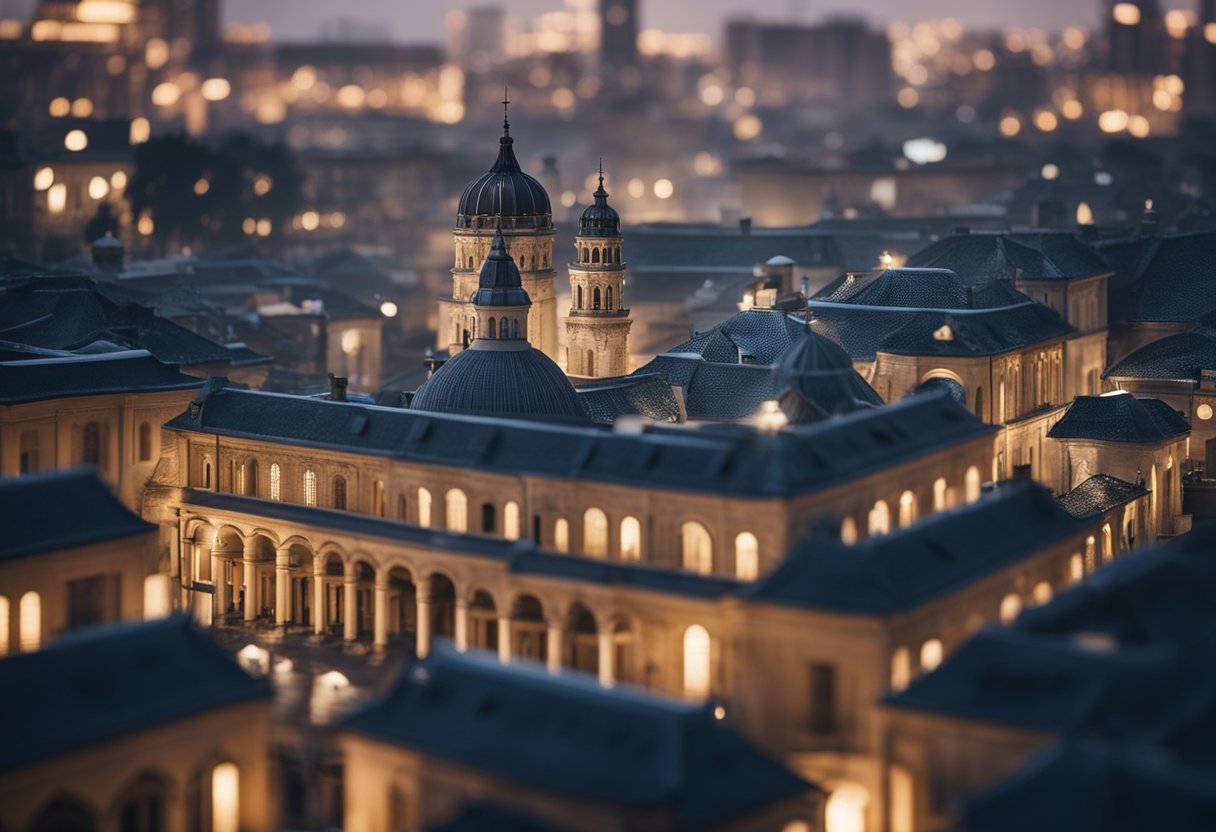
We find ourselves captivated by the hidden worlds beneath our feet, where ancient civilisations crafted subterranean cities that now beckon travellers from around the globe. In the heart of Anatolia, the Cappadocia Underground Cities present an awe-inspiring glimpse into bygone eras. These troglodyte havens, often linked with the early Christian churches, are not only architectural feats but also a testament to human ingenuity and resilience.
- Kaymaklı: Renowned for its extensive network of tunnels and chambers, this underground city invites visitors to wander through a labyrinthine complex. It is a vital part of the region’s UNESCO World Heritage site, with guided tours illuminating its rich history.
- Derinkuyu: Plunging approximately 85 metres below the surface, Derinkuyu stands as the deepest of these cities. Up to 20,000 people could have once found refuge here, alongside their livestock and supplies.
Cappadocia also caters to the needs of modern travel enthusiasts, offering nearby accommodation, quaint shops, and local eateries serving up traditional Anatolian cuisine. The experience is rich with cultural elements, from Byzantine frescoes to relics of the Greek influence on the area.
Halfway across the world, the city of Montreal in Canada presents an entirely different underground experience. Here, an extensive network of interconnected spaces lies beneath the bustling city streets, featuring shopping centres, hotels, and metro stations—all insulated from the harsh Canadian winters.
Travel through these earthy depths gifts us with a broader view of history and culture, while engaging in such explorations supports the local economies and preserves these remarkable sites for future generations.
Conservation Efforts and UNESCO Recognition
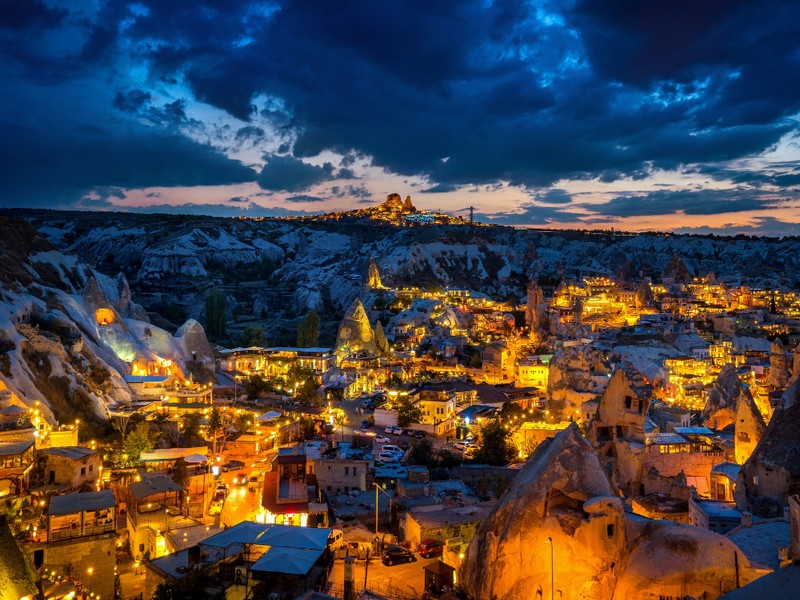
Göreme National Park and the Rock Sites of Cappadocia are distinctive for their exceptional architecture carved from the region’s soft volcanic rock. An urgent need for the conservation of these unique subterranean cities has drawn global attention. Active preservation projects focus on structural stability and preventing further deterioration. International guidance comes from UNESCO’s identification of these sites as a World Heritage Site, signalling their universal value.
The conservation efforts implement strategies that manage tourist footfall and environmental factors. Regular monitoring ensures that the delicate balance between usage and preservation is maintained. Several underground cities in Cappadocia have received attention due to conservation challenges posed by environmental conditions and human interaction.
Formal recognition by UNESCO not only educates the global community about these archaeological wonders but also ensures that local and national authorities invest in their upkeep. The landscape, including unique rock formations and man-made caves, has been shaped by both nature and human hands, requiring sensitive methods to retain its historical and cultural integrity.
Our role, in relating to these significant landmarks, is to encourage mindful exploration and support for conservation efforts. By fostering awareness and respect for such sites, we ensure that the historical narrative and the landscape remain part of our global heritage.
Future Trends and Developments
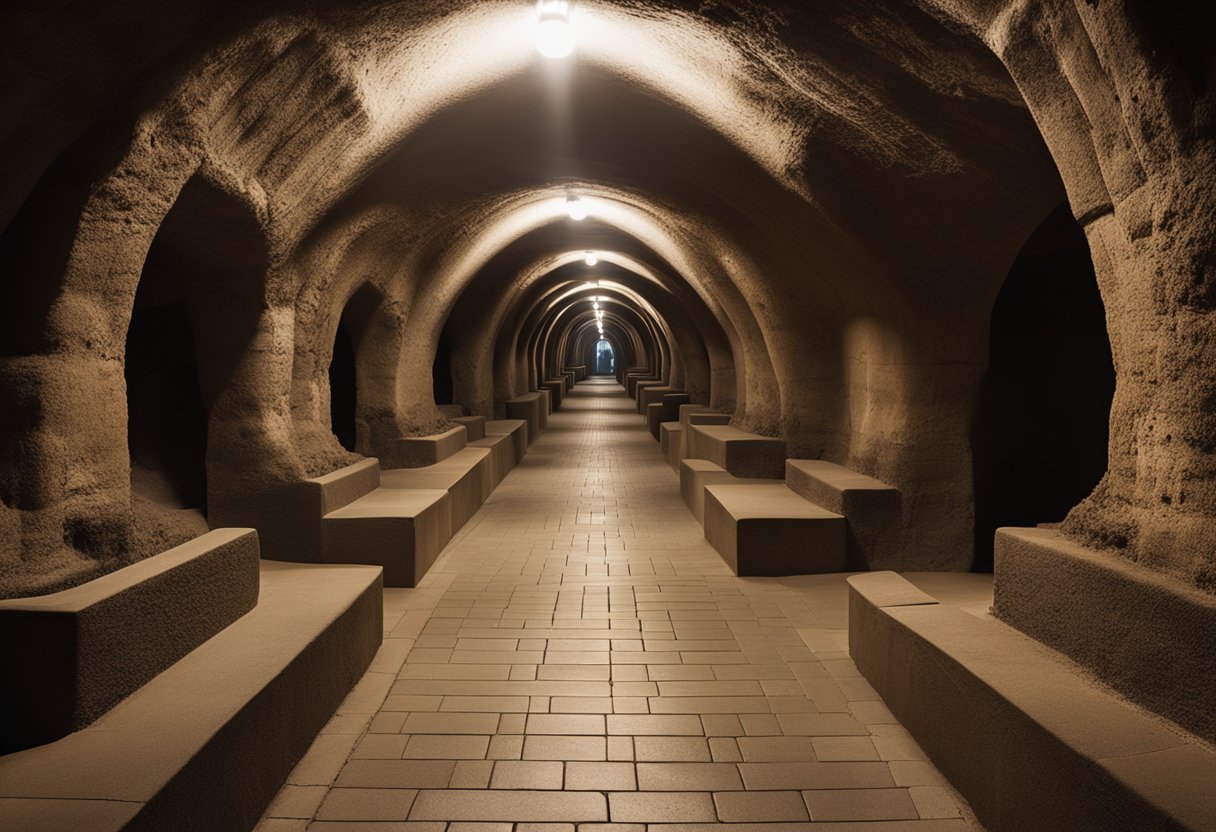
The concept of underground cities, with their rich history from the Cappadocia region to Montreal, is evolving. As we look to the future, several key trends and developments stand out, signifying the enormous potential of subterranean spaces.
Travel and Architecture:
Travel is increasingly seeking the unique, and the architecture of underground cities is responding. We envisage a surge in tourism that appreciates the blend of history and modernity found beneath our feet. For example, Turkey’s underground city of Derinkuyu illustrates a history that can inspire new marvels.
Transportation and Sustainability:
In transportation, Helsinki’s ambitious Underground Master Plan points to creating a more sustainable cityscape. It reimagines underground spaces for parking, logistics, and services, not just as a novelty but as an imperative for urban development.
Entertainment:
Underground spaces also offer novel entertainment venues. By taking clubs, cinemas, and even art galleries below ground, we maximise space above for nature, combatting the urban heat island effect and preserving the skyline.
Creativity and Nature:
Amidst these changes, creativity thrives. The subterranean level offers a canvas for innovators in sectors from infrastructure to entertainment. By intertwining these developments with nature, such as creating underground parks that utilise unique lighting technologies, we reflect a reverence for our environment.
As we move forward, it is evident that our cities will witness a transformation in the use of space, with underground areas offering a plethora of opportunities that marry the practical with the extraordinary.
Interconnections: Subterranean Cities in Modern Culture
Subterranean cities capture our collective imagination and are vividly present in modern culture. These encompass not only the ancient marvels like those in Cappadocia but also contemporary networks like the underground city of Montreal. Their appeal lies in the fascinating interplay of history, culture, and architecture.
In Cappadocia, the impressive network of tunnels represents a testament to human ingenuity and resilience, with settlements like Kaymakli and Derinkuyu that once harboured entire communities. These winding, subterranean structures make frequent appearances in news and documentaries due to their historical and cultural significance. For further insight, the tale of Turkey’s underground cities sheds light on these incredible structures.
Shifting to the modern era, we see underground cities as hubs of transportation and commerce. Montreal’s RÉSO is a prime example, vividly depicted in videos and articles emphasising its over 30 kilometres of pedestrian thoroughfares. It’s not just convenience that marks their importance but also their role as cultural arteries connecting venues, retailers, and art installations, key components of Montreal’s vibrant culture. Dive into the wonders of Montreal’s underground city.
List of Notable Underground Cities and Their Cultural Roles:
- Cappadocia: Heritage, tourism, ancient wonder
- Montreal (RÉSO): Modern commercial network, cultural hub
We find that these subterranean spaces are more than just attractions; they are an integral part of urban landscapes, contributing to our understanding of cultural heritage and present-day societal functions. Whether explored through a news feature or a video tour, they remain standing symbols of our civilisation’s depth and adaptability.
Frequently Asked Questions
In this section, we’ll address some of the most common queries regarding the world’s most extensive underground cities, their contribution to urban life, historical significance, impact on modern architecture, and the prospects and considerations for future subterranean developments.
What are the most extensive underground cities currently known around the world?
Some of the most extensive underground cities include those found in Cappadocia, Turkey, with Kaymaklı and Derinkuyu being notably extensive. Additionally, Montreal’s Underground City, or RÉSO, stands out as a modern, sprawling complex integrating residential and commercial spaces.
How does Montreal’s Underground City contribute to urban life?
Montreal’s Underground City greatly enhances urban life by providing residents and visitors with a vast network of pedestrian pathways, shops, offices, and transportation hubs, all sheltered from the city’s harsh winter weather.
What is the historical significance of Cappadocia’s underground dwellings?
The underground dwellings of Cappadocia are of immense historical significance, as they were built by ancient communities for defence and protection. These subterranean cities represent some of the earliest examples of complex, multi-level urban planning.
What might be the future prospects of underground urban development?
The future prospects of underground urban development could include sustainable living solutions, alleviation of surface congestion, and innovative uses of subterranean spaces in densely populated cities, providing new perspectives on urban living.
How have ancient subterranean cities influenced modern architecture and city planning?
Ancient subterranean cities have inspired modern architecture and city planning by demonstrating the effectiveness of utilising the vertical dimension for space management, climate moderation, and resource conservation in urban design.
What are the challenges and benefits of constructing subterranean municipal spaces?
Constructing subterranean municipal spaces poses challenges such as ventilation, safety, and engineering complexity. However, the benefits can include environmental stability, resource efficiency, and expanded urban capacity without encroaching on surface landscapes.




